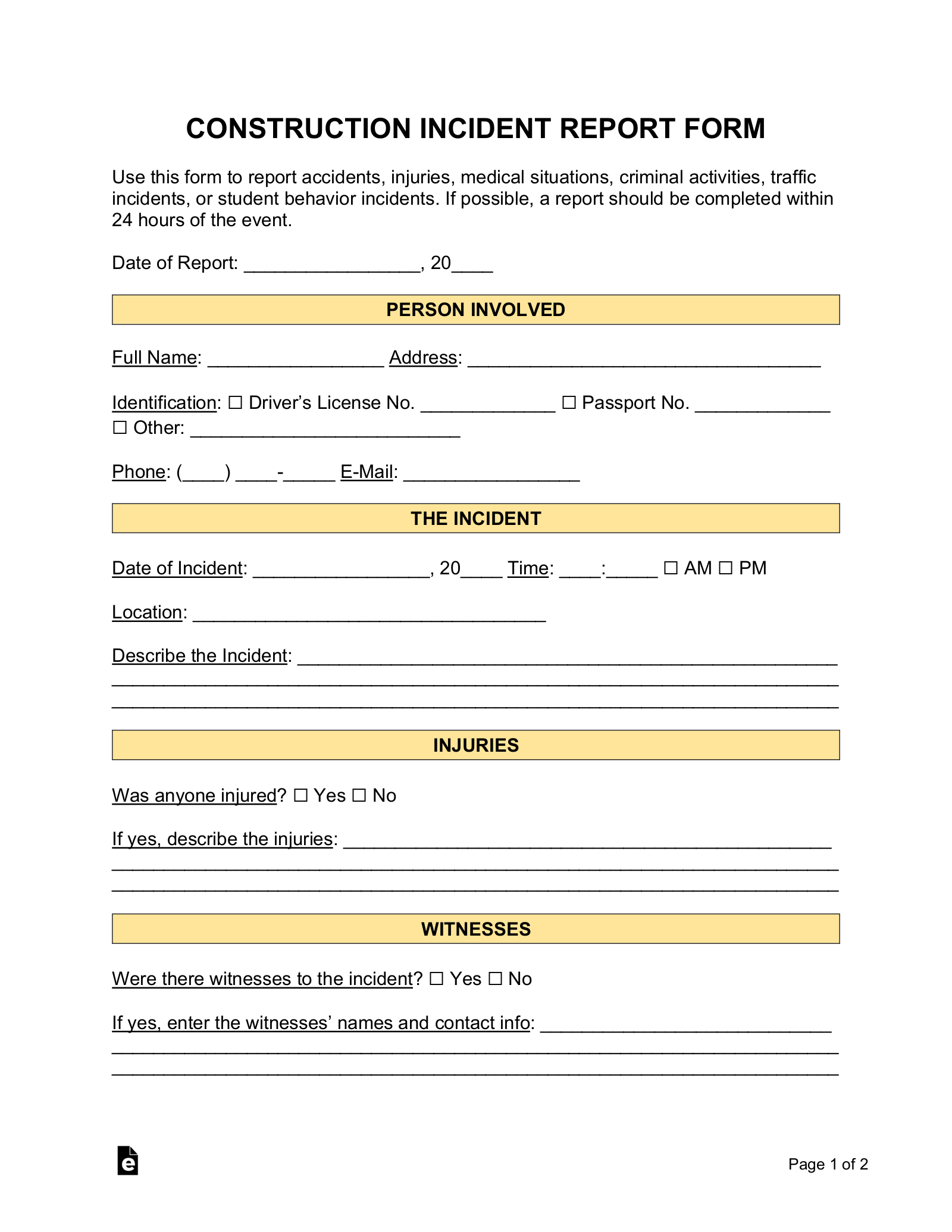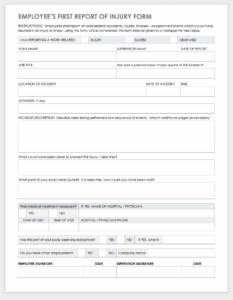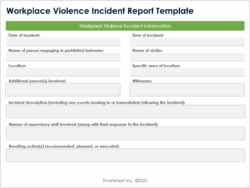Working on a construction site inherently comes with a certain level of risk. Despite rigorous safety protocols and continuous training, accidents can unfortunately still occur. From minor incidents like slips and falls to more serious events, these occurrences disrupt operations, can lead to injuries, and often require immediate attention and thorough documentation. Understanding how to react effectively in the aftermath of such an event is crucial for any construction company, regardless of its size.
When an accident does happen, the immediate priority is always the well-being of those involved, ensuring they receive proper medical care. However, once the immediate crisis is handled, the next critical step is to meticulously document what transpired. This isn’t just about fulfilling a bureaucratic requirement; it’s about gathering vital information that can protect your team, comply with legal obligations, and most importantly, prevent similar incidents from happening again in the future. Accurate reporting forms the bedrock of a robust safety culture and allows for insightful analysis.

This is precisely where a standardized approach becomes invaluable. Having a pre-defined process for documenting accidents saves time, reduces stress during a chaotic period, and ensures no critical details are overlooked. A well-designed construction site accident report template serves as a comprehensive guide, prompting you to collect all necessary information systematically. It transforms a potentially confusing situation into an organized data-gathering exercise, paving the way for better safety management and accountability.
Why a Well-Structured Accident Report is Your Best Tool
In the moments following a construction site accident, emotions can run high, and details might seem muddled. A structured accident report template brings much-needed clarity and organization to this chaotic period. It provides a clear framework that ensures all pertinent information is captured accurately and efficiently, right from the initial response through to the investigative phase. This methodical approach is not just a preference; it is a necessity for effective incident management and future prevention.
Moreover, the legal and regulatory landscape surrounding workplace accidents is complex. Organizations like OSHA in the United States, or similar bodies internationally, have strict requirements for reporting and investigating incidents. A comprehensive accident report is your primary document for demonstrating compliance, showing due diligence, and providing evidence should any legal proceedings arise. Without thorough documentation, your company could face significant fines, legal challenges, and damage to its reputation.
Beyond compliance, the core purpose of any accident report is to facilitate a thorough root cause analysis. It is not enough to simply record that an accident occurred; the goal is to understand *why* it happened. Was it a lapse in training, equipment malfunction, environmental factors, or a combination of issues? By meticulously detailing every aspect of the incident, a construction site accident report template helps investigators pinpoint contributing factors, allowing you to implement targeted corrective actions rather than just superficial fixes. This data-driven approach is essential for continuous improvement in safety standards.
Key Sections of a Robust Report
- Date, Time, and Exact Location of Incident: Pinpointing when and where the event occurred.
- Details of Injured Parties and Witnesses: Full names, roles, contact information, and initial statements.
- Description of the Accident: A factual, step-by-step account of what happened, without assigning blame.
- Contributing Factors: Any identified hazards, equipment issues, procedural lapses, or environmental conditions.
- Medical Attention Provided: Immediate first aid, ambulance call, hospital transport, and diagnosis if known.
- Follow-up Actions: Initial steps taken, investigation assignments, and planned corrective measures.
Ultimately, a standardized construction site accident report template fosters consistency across all incident reporting. Whether it’s a minor cut or a major injury, the same level of detail and reporting protocol is applied. This consistency is vital for spotting trends, identifying recurring problems, and making informed decisions about safety improvements across your entire construction operation. It transforms individual incidents into valuable learning opportunities for the entire team.
Implementing Your Construction Site Accident Report Template Effectively
Having a robust construction site accident report template is only half the battle; knowing how to implement it effectively is where real safety gains are made. The first step involves thoroughly training all relevant personnel, including site supervisors, foremen, safety officers, and even lead workers, on its proper usage. Everyone involved in incident response and reporting must understand each section of the template, the importance of accurate data entry, and the timeliness required for submission. Regular refresher training sessions can help reinforce these practices and ensure everyone remains proficient.
Furthermore, emphasize the importance of timely reporting. Critical details can fade from memory quickly, and physical evidence can be altered or removed. The template should be readily accessible on-site, whether in a physical binder or, ideally, through a digital platform on tablets or smartphones. Empowering workers to report incidents promptly, even near misses, creates a culture of vigilance and allows for immediate investigation and mitigation before a minor issue escalates into a serious accident.
Finally, integrating the accident report template into your overall safety management system is crucial. The data collected from these reports should not just sit in a file; it needs to be analyzed periodically. Review common accident types, times, locations, and contributing factors to identify systemic issues. Use this invaluable information to update safety training, modify work procedures, or invest in new equipment.
- Train all relevant staff on the template’s usage.
- Ensure immediate reporting of all incidents and near misses.
- Maintain a secure and accessible record-keeping system for completed reports.
- Regularly review and analyze incident data to inform safety improvements.
This proactive approach, driven by well-documented incident data, is what truly elevates a safety program.
Embracing a systematic approach to accident reporting through a well-designed template fundamentally transforms how a construction business manages risk. It shifts the focus from merely reacting to incidents to proactively preventing them, building a stronger, more resilient safety culture from the ground up. This dedication to detailed documentation reinforces the message that safety is a top priority, protecting both your workforce and your business interests.
Ultimately, by streamlining the reporting process and leveraging the insights gained from each incident, companies can foster an environment where safety is continuously improved. This commitment leads to fewer accidents, reduced downtime, and a more productive and secure workplace for everyone involved in the demanding world of construction.



